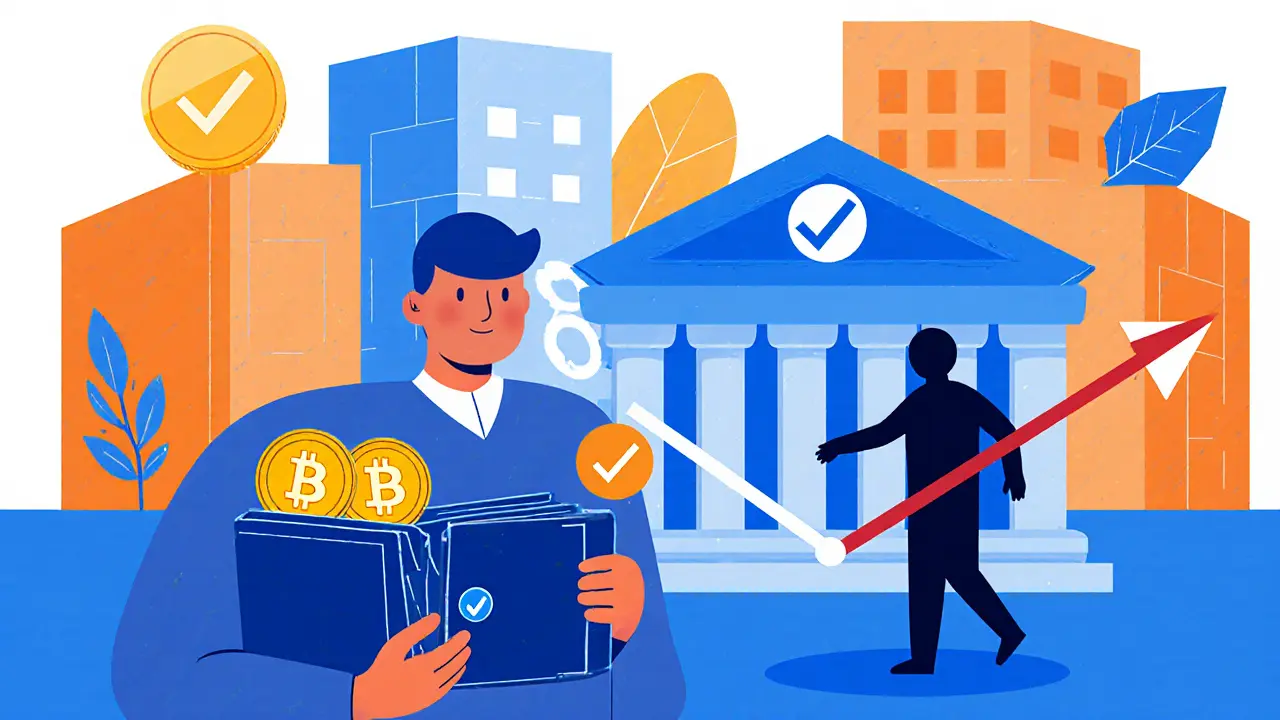Stablecoin Legality in Bolivia
When it comes to stablecoin legality in Bolivia, the use of digital currencies tied to stable assets like the US dollar. Also known as pegged cryptocurrencies, they let people bypass local financial restrictions—but the government hasn’t given them a clear green light. Unlike countries that ban crypto outright, Bolivia doesn’t have a specific law saying "stablecoins are illegal." But that doesn’t mean you’re safe.
The Central Bank of Bolivia has been clear: digital currencies, including Bitcoin, Ethereum, and USDC. Also known as cryptocurrencies, they aren’t recognized as legal tender. That means banks can’t process crypto transactions, exchanges can’t operate officially, and merchants can’t legally accept them as payment. The rule isn’t about owning crypto—it’s about using it in the formal financial system. So if you hold USDT or DAI in a wallet? You’re not breaking the law. But if you try to pay for groceries with it? You’re stepping into gray territory.
People in Bolivia still use stablecoins anyway. Why? Because inflation has eaten away at the boliviano, and many can’t access foreign bank accounts. So they turn to P2P platforms, WhatsApp groups, and crypto wallets to send money across borders or protect savings. It’s not official. It’s not regulated. But it’s happening. The government hasn’t cracked down hard on individuals—yet. Enforcement focuses on large-scale operations, not everyday users. Still, if you’re trading or holding, you’re doing it without legal protection. If a platform disappears or your wallet gets hacked, there’s no recourse.
What about exchanges? None are licensed in Bolivia. Even big names like Binance or Kraken don’t offer direct fiat on-ramps there. That pushes users toward decentralized options: DEXs like Uniswap, P2P trades on LocalBitcoins or Paxful, and crypto-to-crypto swaps. These aren’t illegal per se, but they’re invisible to regulators. That’s both a strength and a risk. You avoid banks, but you also avoid safety nets.
And here’s the catch: while stablecoins are used to dodge inflation and restrictions, they’re also used to move money out of the country. That’s a red flag for regulators. Bolivia’s financial laws are built around controlling capital flight. So even if you’re just trying to preserve value, you’re indirectly challenging the state’s monetary control.
There’s no official guidance for users. No tax rules. No reporting requirements. That sounds free—but it’s actually risky. If the government changes its stance, you could lose access to funds or face penalties. And if you’re caught using crypto for something that looks like money laundering—even if you didn’t mean to—you could be dragged into a legal mess.
So what’s the real picture? Stablecoins aren’t banned in Bolivia, but they’re not allowed either. They exist in the shadows, used by people who need them more than the system wants them to. If you’re thinking about using them, know this: you’re on your own. No bank insurance. No legal recourse. No government backing. Just you, your wallet, and the blockchain.
Below, you’ll find real stories and breakdowns from people who’ve navigated this space—what worked, what blew up, and how to stay safe when the rules are written in smoke.
Legal Penalties for Crypto Trading in Bolivia: What You Need to Know in 2025
Bolivia lifted its crypto ban in 2024, but trading is now tightly regulated. Know the legal risks, penalties, and how to stay compliant with the Central Bank's rules in 2025.
learn more